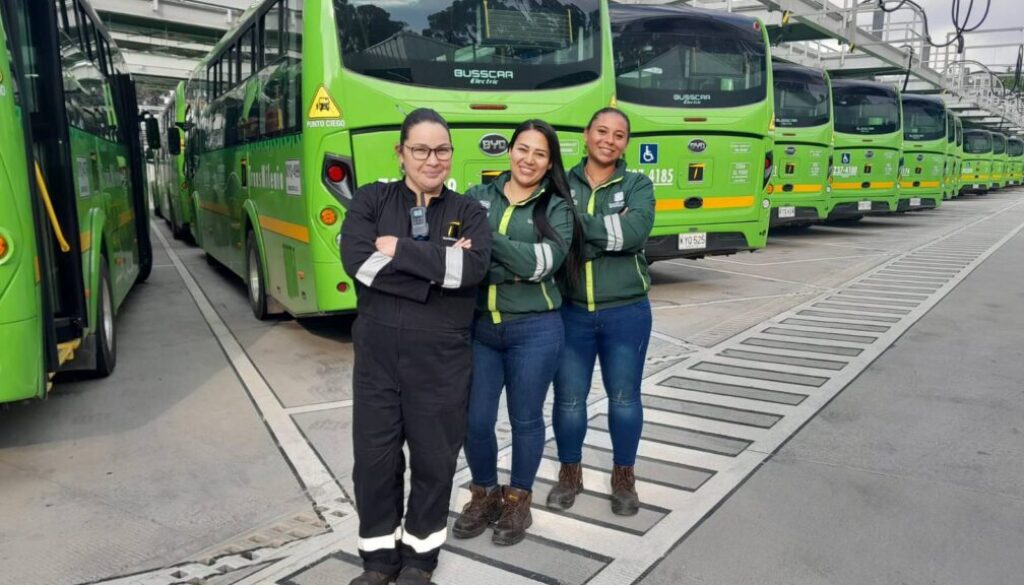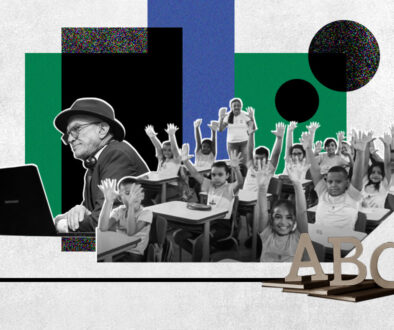A green option led by women: Bogota tests a new public transportation model
Getting your Trinity Audio player ready... |
“La Rolita” is a state-owned company promoted by the Mayor’s Office that, by means of electric buses, offers new routes in neighborhoods that are difficult to access in the Colombian capital. It also proposes to break down gender stereotypes and to promote environmental sustainability.
In 1989, all public transport options in Bogotá (Colombia) became private. Since then, no local administration had dared or been able to offer state-owned alternatives. In particular, in order to cover routes in neighborhoods that traditional companies could not reach. In September 2022, the city finally took a step forward with a proposal that is already receiving international attention: “La Rolita”.
This is the first multimodal transport operator led by women and with 100% electric buses. According to official estimates, its routes benefit more than 35,000 users through 195 units equipped with new technologies. Another differentiating element of the proposal is that more than half of its staff are women drivers who previously had almost no access to this sector.
“La Rolita” complements the network of the Integrated Public Transport System (SITP) and provides services in the area of Ciudad Bolívar, in the south of the city. The area had no integrated routes covering its streets, which are steep and difficult to access.
“The transportation sector, which generates a lot of employment, has been masculinized. It is a field, like many others, that we women are conquering. Just as we are half women and half men in the city, La Rolita will have the same proportion,” declared the mayor, Claudia López. “It is a commitment to clean energy. It is a project that comes to transform Bogotá and that has to reach the other cities of the country”, contributed Guillermo Reyes, Minister of Transportation.
The structuring process
The investment for the creation of Operadora Distrital del Transporte, the legal name of “La Rolita”, was around 10 billion Colombian pesos (US$ 2.4 million) and received international assistance. After going through a series of judicial instances, the initiative was able to start operating in the last quarter of 2022.
“Before starting with the initial structuring, it was necessary to generate knowledge about the challenges and experiences of this type of project for the Secretariat of Mobility of Bogota and Transmilenio (the city’s mass transit system),” explained Natalia Ariza, Transportation Specialist for Colombia at the Inter-American Development Bank (IDB). This institution has accompanied the project from its initial stages.
In this context, interviews were conducted to learn in depth about other similar cases in Latin American cities. Possible challenges were identified and lines of action were established to overcome them. In particular, emphasis was placed on the possibility that “La Rolita” could be maintained even if the current government changes in the future. And, in the not too distant future, it is expected to become a joint venture, with the municipal government as a majority shareholder together with a private strategic partner.
“When we started the structuring, we had several objectives in mind. The first was to have an operator with a focus on social profitability for the user. The second was for Transmilenio to have an in-depth knowledge of operation, costs and maintenance. The third was to have an alternative in the face of eventual difficulties in the provision of service by some existing concessions (i.e., to reach outlying neighborhoods). And the fourth was to begin to close the gender gaps in Bogotá’s transportation system,” said Álvaro Rengifo, the first legal representative of “La Rolita”.
Future, gender and environment in Bogota
By December 2022, Operadora Distrital del Transporte managed to complete the 11 routes planned at the time it was created. The next steps include reaching more regions, in addition to those already covered in the south of Bogotá. It also yearns to operate larger capacity buses and reach out to other mobility alternatives, such as cable.
“I think the biggest challenge has been to generate trust. It was thought that we were not going to be able to operate and today we are showing totally different things. Although we still have a long way to go, today “La Rolita” is competitive and viable,” reflected Carolina Martínez, manager of the municipal company.
In her opinion, the “feminization” of public transport implies adding several measures. Among them, the design of a breastfeeding room for female drivers, guaranteeing care spaces and establishing clear and flexible rules.
In various testimonies, female drivers proudly recounted that their jobs allowed them to overcome prejudices. “They told us that we would not be able to do it, and look at us, we even had to deal with the hardest part of the city, which is the mountains,” said Liliana Castro in an interview with the newspaper El País. They also warned that sometimes they must deal with situations of mistreatment and that they must prepare themselves to be able to deal with them.
Another highlight of the system is its contribution to the environment. Official statistics indicate that electric buses in the city avoid the emission of 94,300 tons of carbon per year. “We are betting on an improvement in air quality and a new employment opportunity for the women of Bogotá,” commented Deyanira Ávila, Secretary of Mobility.
This article was originally published on June 7, 2023 in +Community.




